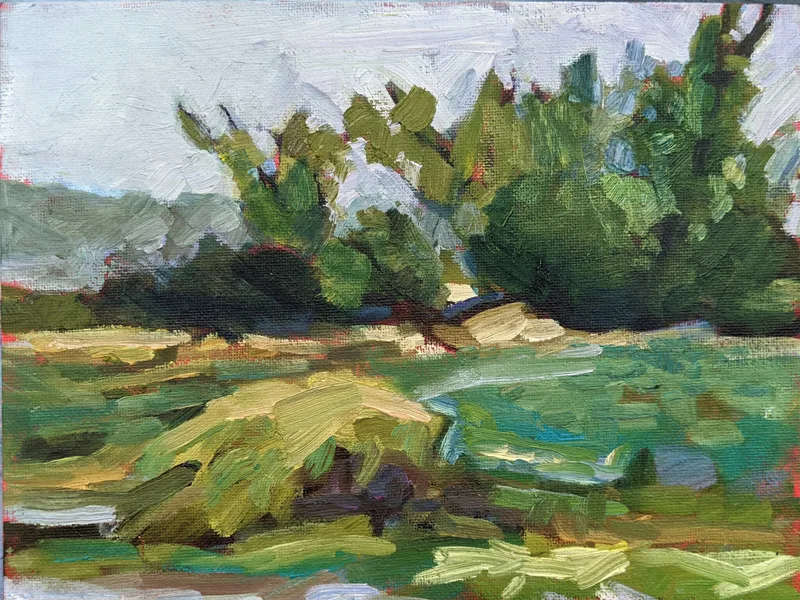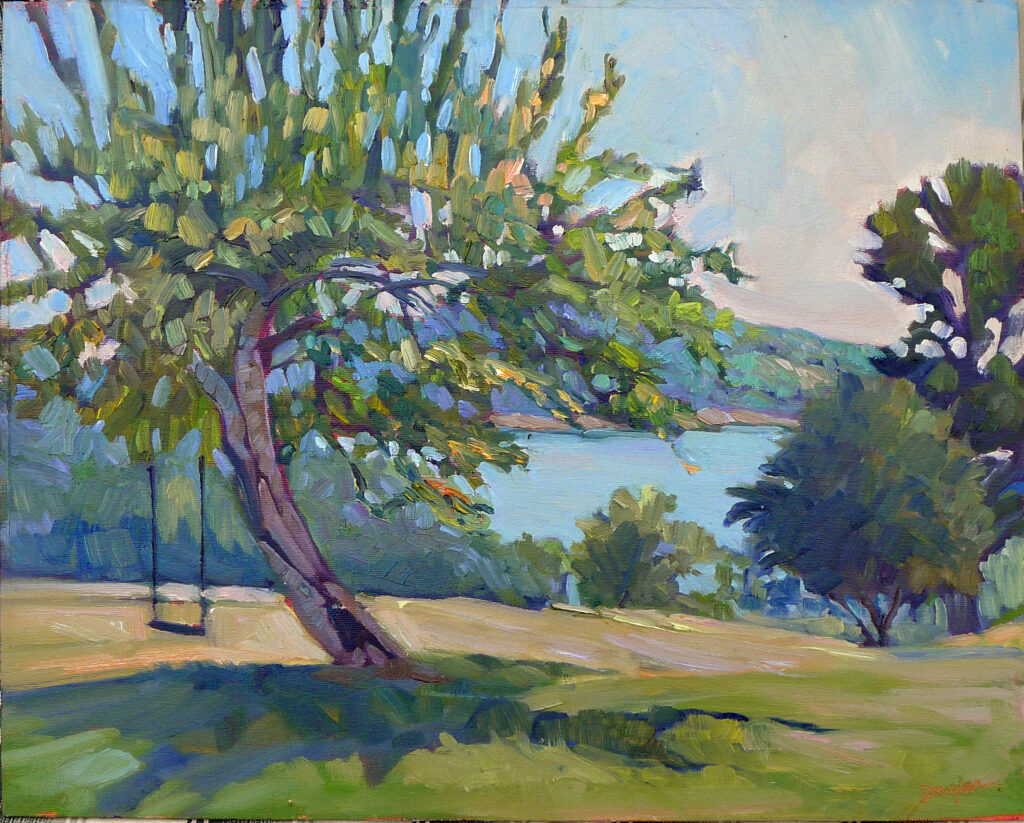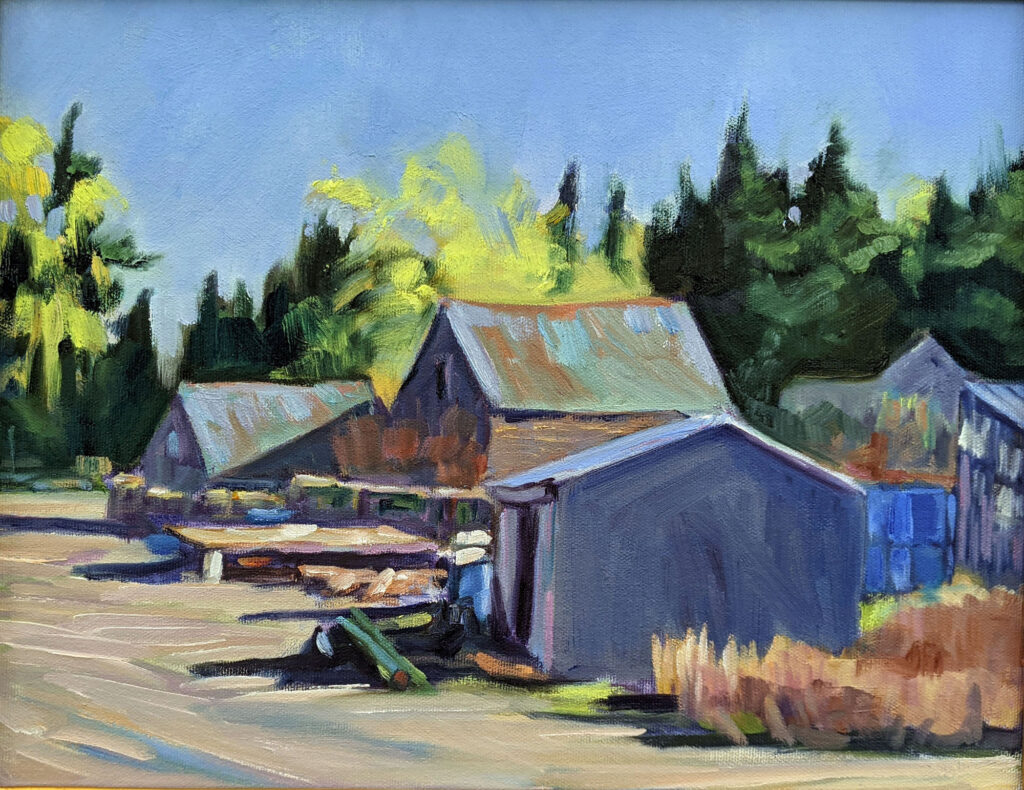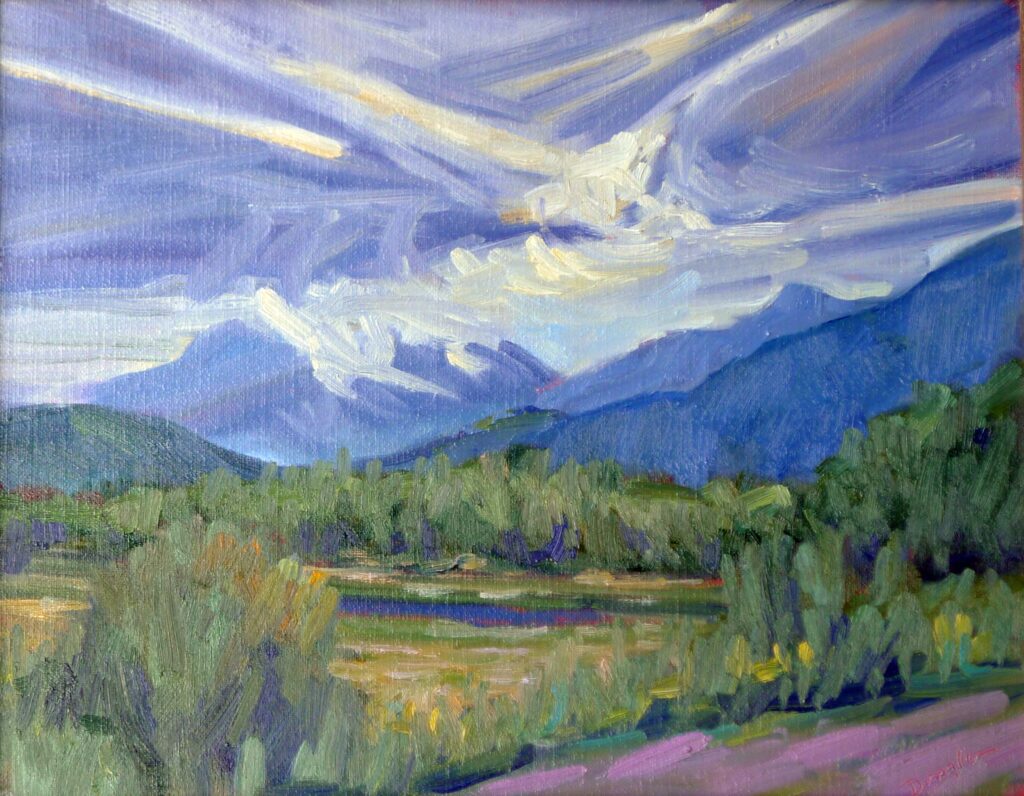
Knowing why we do something helps us figure out how to do something. Today, I want to get down to the low-level programming of the art calling.
Why art?
I sometimes tell people that if I wasn’t a painter, I’d be a greeter at Wal-Mart. I no longer have conventional marketable skills. I’ve focused on painting for so long that everything else has fallen by the wayside.
That skirts around the real issue of what holds me here. I’m a visual thinker and a maker, and more than a bit didactic. The confluence of these can only be art.
Why are you compelled to create art? Your reasons will be different from mine, but are no less valid.

Has what you’re doing ever been done before?
Not only has what I do been done repeatedly, it continues to be done by many painters who are just as competent as me.
On the other hand, nobody is doing exactly what I’m doing, because nobody has the same combination of brushwork and worldview.
As much as we prize novelty, AI points out the danger of putting all our efforts into style. Style can be easily copied. Content can’t.
I could drill down and tell you how my painting varies from my peers’ in terms of focus, worldview, color, drafting and brushwork. That’s a helpful exercise, especially when I’m feeling low.
How is your work unique? If you can’t answer this, is it because you’re drafting in a mentor’s or a movement’s slipstream? If so, what are you going to do about that?
How do you work?
I’m a big believer in routine. It frees me up to concentrate on work, and I believe the human brain settles down into productivity fastest when it works at the same time every day. Others have told me this is stultifying.
What is the work style that works best for you? Do you go on painting tears, or do you work methodically? Why does your system work for you?
What’s your ideal working environment?
Spaces like Francis Bacon’s studio make me agitated almost to the point of being physically ill. I need order to think. Tidying is, to me, a time when I let my subconscious mind resolve its confusions while my conscious mind does the important work of putting things away.
For others, this is unnecessarily proscriptive, and I know painters who never get past cleaning to do any work at all. What’s your ideal working environment?

What is your creative process?
For plein air, I look, do a value sketch, and then transfer that to my canvas. For studio work, I start with an idea in my sketchbook and repeatedly refine it. Only then come reference photos and the business on the canvas.
I’ve occasionally tried to mix this up by copying my pals’ work system, but that has never worked for me. (Nobody ever called me a good student, just a good teacher.)
Do you have a rock-solid process? Are you willing to change it up? Is your answer a function of how long you’ve been painting?
What do you want to think about next?
I think I’ll be perfectly content to paint landscapes until I die, but nobody can say that for sure. Right now, I’m interested in the nexus between words and pictures. If nothing comes of that, it’s no loss. I’ve tried a lot of things that haven’t panned out, and I always learn from them.
If you were going to expand your media or subject matter, what would you add?
My 2024 workshops:
- Sea & Sky at Schoodic, August 4-9, 2024.
- Find your authentic voice in plein air: Berkshires, August 12-16, 2024.
- Art and Adventure at Sea: Paint Aboard Schooner American Eagle, September 15-19, 2024.
- Immersive In-Person Workshop: Rockport, ME, October 7-11, 2024.


The horizon and sky are beautiful in the Whiteface painting. I’ve had the good fortune to visit there, and you captured it beautifully.